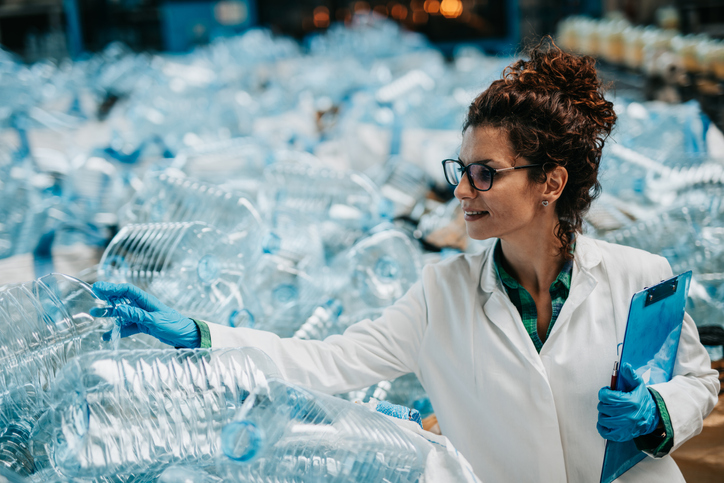Upcycling Plastic Bottles into Hydrogels
27 Sep 2021

Researchers explore a new way to convert polyethylene terephthalate (PET) plastic waste into value-added materials with potentially versatile applications.
While plastics can bring convenience to our daily lives, plastic waste can persist in ecosystems causing serious damage. Landfill and incineration, which are commonly used for the treatment of plastic waste, considerably contribute to carbon dioxide emissions. Pollution of marine environments by microplastics caused by the slow breakdown of plastic litter is another global concern.
One efficient way to eliminate ever-increasing plastic waste is to convert it into useful materials – a process known as upcycling. To ensure the green and sustainable use of fossil resources, there is an increasing demand for robust methods for plastic upcycling, yet possible chemical technologies are still limited by basic synthetic processes.
Creating Functional Materials
Polyethylene terephthalate (PET) is a clear, strong and lightweight plastic widely used for food and drinks packaging, especially bottles containing soft drinks, juice or water.
The depolymerisation of PET through chemical reactions is the essential first step in the upcycling process – generating intermediate products used for synthesising more functional materials.
Hydrogels are 3D networks of hydrophilic polymers that can hold a large amount of water while maintaining their structure. Due to properties such as hydrophilicity, controllable swelling, modifiability and high absorption capacity, these materials have many applications in various processes from industrial to biological – including as adsorbents for dye removal.
Two-Step Conversion
In a new study, published in the Journal of Environmental Chemical Engineering, researchers develop a method to convert waste PET bottles to a water-based hydrogel by chemical cross-linking of PET aminolysis products.1
The researchers carried out aminolysis on PET samples obtained from waste soft drink bottles. They then prepared a mechanically stable hydrogel by cross-linking the water-soluble oligomeric products with ethylene glycol diglycidyl ether (EGDE). They then studied the absorption properties of the PET–derived hydrogels towards two typical industrial dyes using UV–vis spectroscopy – demonstrating high removal rates of Congo Red.
The researchers used ultrapure water generated from an ELGA PURELAB® Chorus 1 laboratory water purification system for their experiments, minimising the risk of adding contaminants that may affect their results.
A New Upcycling Solution
In this study, a hydrogel material was prepared by a complete conversion of PET bottle plastic to intermediate water-soluble building blocks via aminolysis followed by chemical cross-linking.
The transformation of a petrochemical–derived polymer to a water-based hydrogel offers a promising new way to turn plastic waste into an environmentally–friendly functional material. While the researchers demonstrated one possible application as an absorbent for the removal of an industrial dye, it is anticipated that applications in other fields that require water-based materials will soon be identified.
This is the first example of PET waste conversion to a hydrogel material, which may help to broaden the scope of potential uses for this plastic waste. Although the process will require further optimisation, these results highlight the potential of the approach as a strategy for plastic waste removal.
Why Choose ELGA LabWater?
ELGA’s expert engineers, chemists and scientists are at the forefront of technological innovation. We continue to introduce game-changing features to the laboratory water market.
Reference:
- Chan, K & Zinchenko A. Conversion of waste bottles’ PET to a hydrogel adsorbent via PET aminolysis. J Environ Chem Eng 2021;9(5):106129 https://doi.org/10.1016/j.jece.2021.106129
Dr Alison Halliday
After completing an undergraduate degree in Biochemistry & Genetics at Sheffield University, Alison was awarded a PhD in Human Molecular Genetics at the University of Newcastle. She carried out five years as a Senior Postdoctoral Research Fellow at UCL, investigating the genes involved in childhood obesity syndrome. Moving into science communications, she spent ten years at Cancer Research UK engaging the public about the charity’s work. She now specialises in writing about research across the life sciences, medicine and health.
